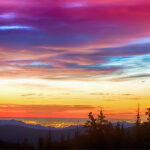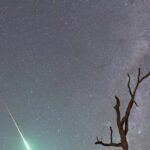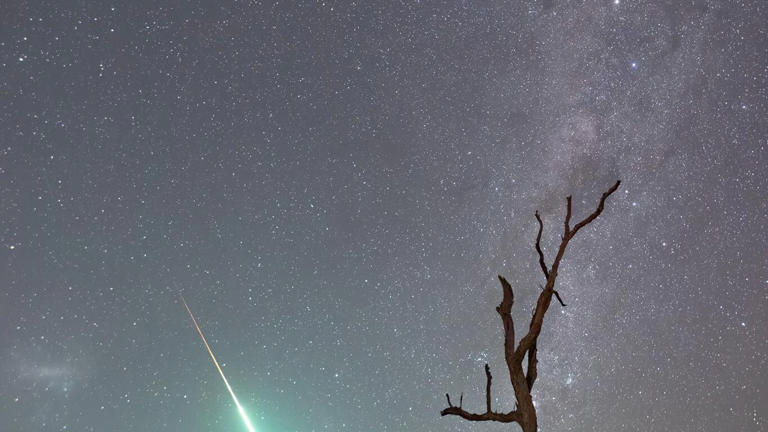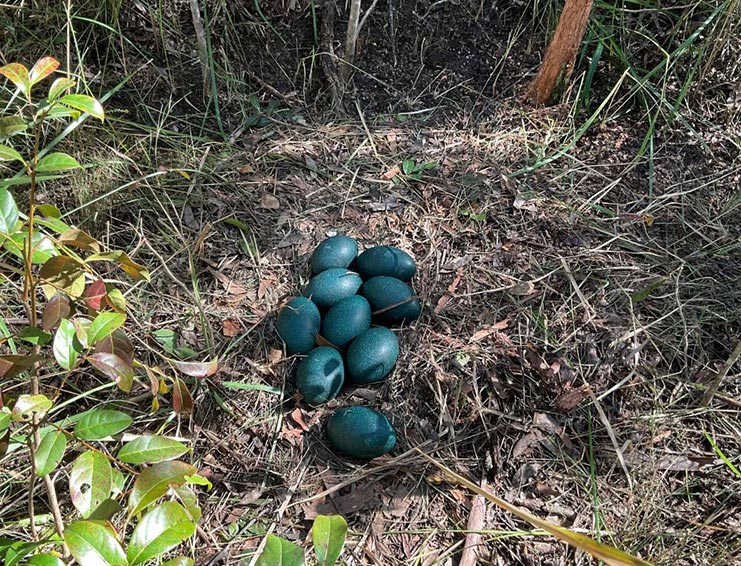Avid New South Wales photographer Doug Ingram had just switched on his camera to take pictures of stars on Sunday night when a moving orange light caught his attention.
“In came the fireball and I had the shutter open for the test shot,” he said.
Mr Ingram took a quick snap and shouted out a “a very loud yes” when he realised what he’d captured from Bodalla on the Far South Coast.
“I’ve seen lots of meteors like that but never had the camera pointed in the right direction,” he said.
The meteor was spotted along the South Coast, from Shoalhaven down to the Victorian border and as far inland as Canberra just after 8pm on Sunday.
Star-crossed snappers
Just as Mr Ingram was opening his shutter at Bodalla, Scott McAleer was preparing to take his own image of the night sky 30 kilometres north at Tuross Head.
“I looked up at the sky and a great big meteorite went straight through the sky and I was lucky enough to capture it,” the Jervis Bay local said.
In an amazing twist of fate Mr McAleer and Mr Ingram had met that day on a beach and bonded over a passion for photography.
Mr Ingram said he couldn’t believe it when he saw Mr McAleer’s image on a social media page the next morning.
“Two guys that had met less than 24-hours prior, happened to be out at the same time on the same night and got the same meteor,” Mr Ingram said.
‘Small to medium’ rock
Astrophysicist and cosmologist Brad Tucker confirmed the shutterbugs had photographed a meteor.
“This was a natural rock that happened to travel through space and burnt up over the skies,” he said.
“That green colour people saw in the meteor tells us it’s iron and nickel, which really only happens from a meteor, whereas space junk would tend to be more yellow.”
Dr Tucker said the meteor looked to be up to one metre in diameter and would be classed as “small to medium” in size.
Dr Tucker said if fragments of the meteor did fall to Earth, they would have likely fallen into the sea.
“Given most of that probably happened over the ocean, it would be hard to really figure out if did it actually have meteorites – the actual rock coming down to the ground – or not,” he said.







